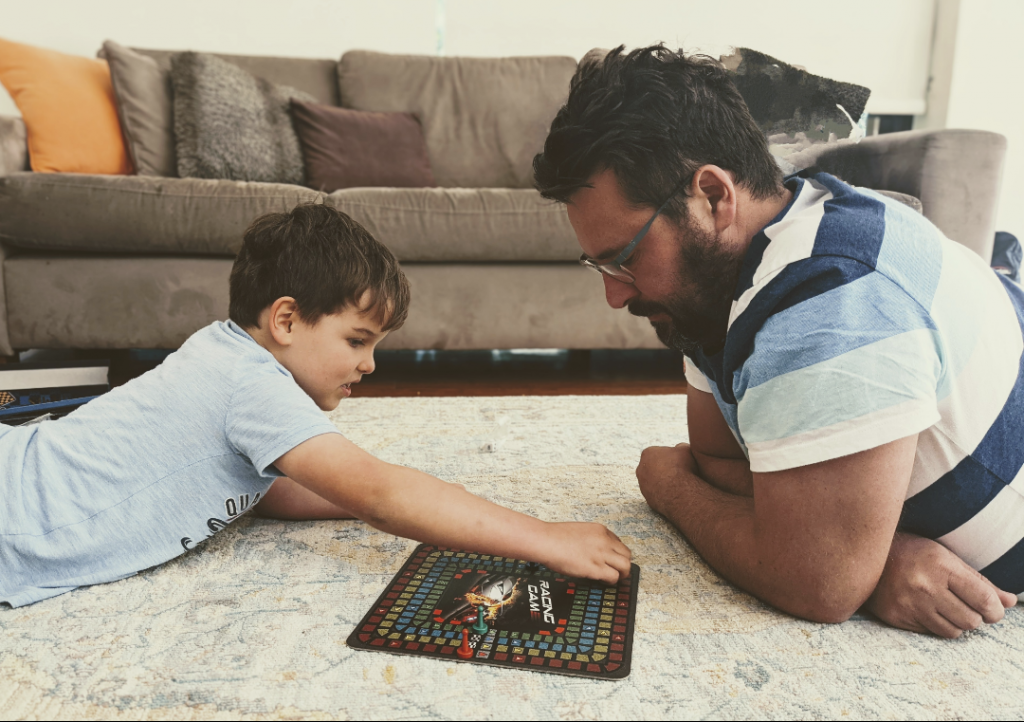Author: Kim Berry, Paediatric Occupational Therapist
8 min read
Why self-regulation can help your child cope.
The ability to self-regulate is one of the most important supporting factors in relation to a child’s resilience. So, how do you build resilience in your child?“

If you’re a parent of a school-aged child, chances are you’ve heard teachers, friends and parenting experts talk about the importance of resilience. It’s been one of those buzzwords that have been used a whole lot throughout the pandemic with all of the changes our kids have had to manage… but rarely do we hear about why it’s important and how to build resilience in our children.
What is resilience?
Resilience is broadly defined as the ability to recover from setbacks, adapt to change, and keep going in the face of challenges. It’s getting back on your bike with a grazed knee, turning up week after week when you’re on the losing soccer team, having the courage to make a new friend when your best friend moves away, or accepting why you needed to repeat at school and giving it your best the second time round.
These common childhood scenarios shouldn’t be viewed as insignificant. In particular, some of these childhood obstacles can stir up feelings of disappointment, embarrassment, hurt, or fear of change, which can feel all-consuming. Dealing with these experiences might be met with mood swings, emotional outbursts and further challenges to participate, communicate and progress.
What is self-regulation?
These responses indicate challenges with self-regulation, which is an important factor in supporting a child’s resilience. Self-regulation is the ability to manage your own emotions, behaviour, and thoughts in relation to the demands placed on us.
We’ve said it before and we’ll say it again, the young brain is incredible. We know that in early childhood years, children are well on their way to developing their regulation skills as they begin to mimic and practise what is happening around them. For example, toddlers start to find ways to soothe themselves, play cooperatively and share toys.
So what can you do if your child is struggling with self-regulation? Firstly… stay calm! Resilience and self-regulation develop through co-regulation. This comes from interactions, support, coaching, and modelling of regulation strategies provided by caregivers or trusted adults (e.g. teacher, relatives). As children get older, the level of co-regulatory support they require from the caring adults around them tends to reduce as their self-regulation skills increase.
How can you build resilience?
Here are some important things to consider when supporting your child’s regulation:

- Provide a warm, responsive relationship where your child feels safe to learn, come to you for support, and make mistakes – in fact, embrace your own mistakes as well! Talk to your child if you make a mistake (e.g. accidentally putting salt instead of sugar in your tea… meaning you have to make it all over again!). Make sure you also show your child how you recovered from the mistake;
- Model your own regulation strategies and linked emotions (e.g. “Oh no, my tea tastes salty! I’m so mad that I have to make another one all over again. I’m going to take a deep breath in and a looooong breath out before I go back to the kitchen”);
- Create consistent and predictable routines and expectations, such as regular bedtime and morning routines;
- Give time and space for your child to experience different emotions and provide validation for what they are feeling;
- Seek support from your child’s teachers and other trusted adults, and ensure they understand your child’s challenges with regulation;
Self-regulation is at the heart of a child’s resilience. Helping to build resilience today will benefit them for life.
For more information about self-regulation or to make an enquiry about an assessment for your child, contact MoveAbout Therapy Services. You’ll be connected with an experienced and compassionate paediatric OT.
GET IN TOUCH

